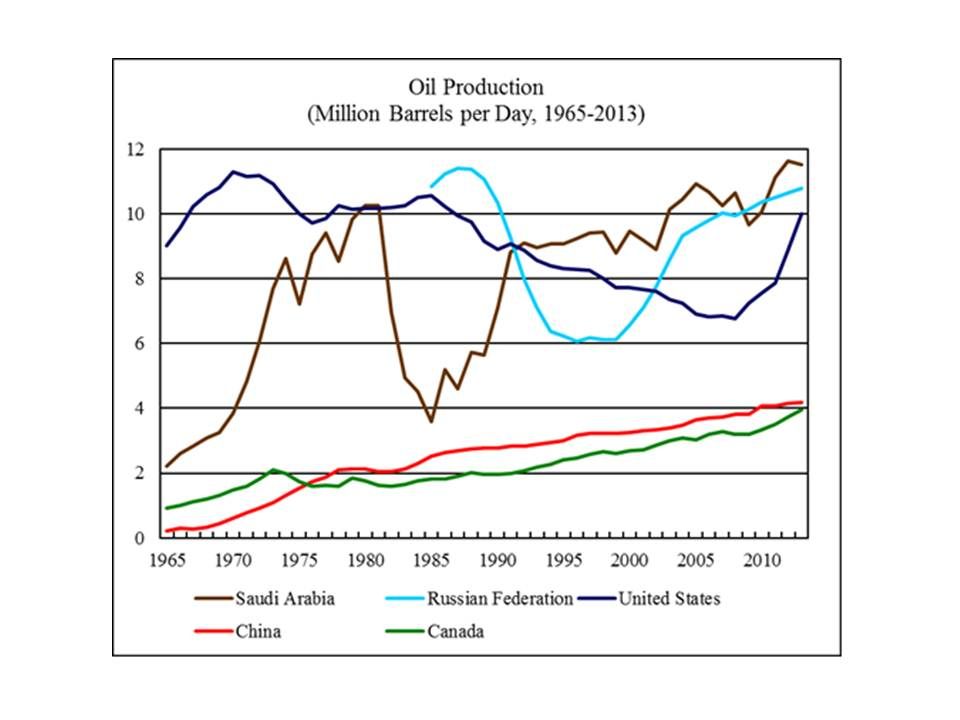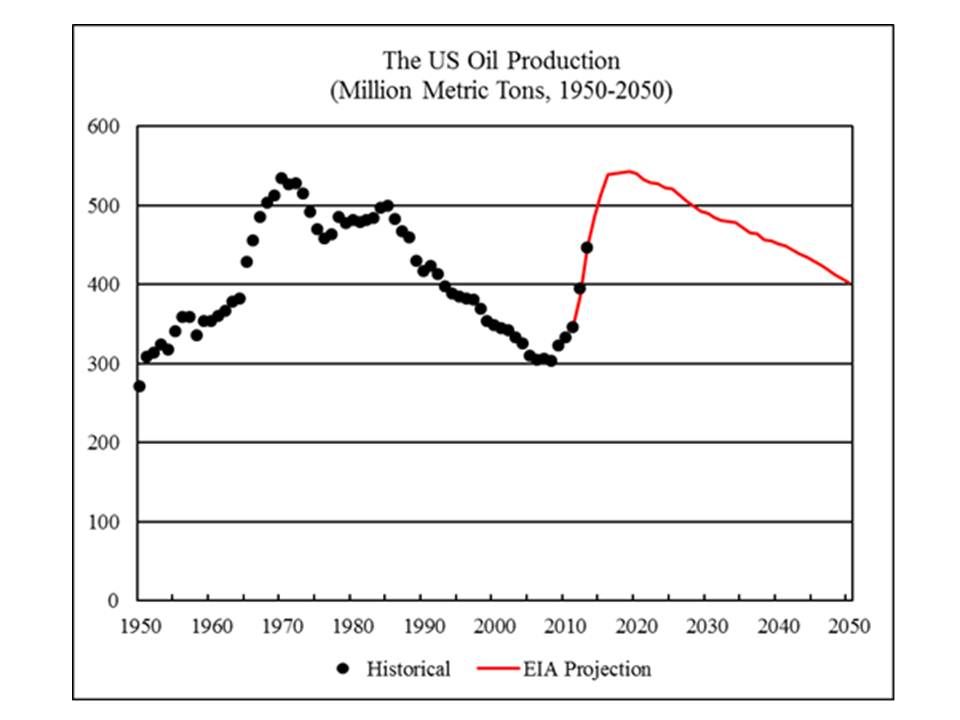This is a guest post by Political Economist
World Energy 2014-2050: An Informal Annual Report
“Political Economist” June 2014
The purpose of this informal report is to provide an analytical framework to track the development of world energy supply and demand as well as their impacts on the global economy. The report projects world supply of oil, natural gas, coal, nuclear, hydro, wind, solar, biofuels, and other renewable energies from 2014 to 2050. It also projects the overall world energy consumption, gross world economic product, energy efficiency, and carbon dioxide emissions from 2014 to 2050.
The basic analytical tool is Hubbert Linearization, first proposed by American geologist M. King Hubbert. Despite its limitations, Hubbert Linearization provides a useful tool helping to indicate the likely level of ultimately recoverable resources under the existing trends of technology, economics, and geopolitics. Other statistical methods and some official projections will also be used where they are relevant.
Oil
According to BP Statistical Review of World Energy 2014, world oil consumption (including crude oil, natural gas liquids, coal-to-liquids, gas-to-liquids, and biofuels) reached 4,185 million metric tons (91.3 million barrels per day) in 2013, 1.4 percent higher than world oil consumption in 2012. In 2013, oil consumption accounted for 32.9 percent of the world primary energy consumption.
World oil production (including crude oil and natural gas liquids) reached 4,133 million metric tons (86.8 million barrels per day) in 2013, 0.6 percent higher than world oil production in 2012. Figure 1 shows oil production by the world’s five largest oil producers from 1965 to 2013.
 As of 2013, world “proved” oil reserves stood at 238 billion metric tons, 1.0 percent higher than the “proved” oil reserves in 2012.
As of 2013, world “proved” oil reserves stood at 238 billion metric tons, 1.0 percent higher than the “proved” oil reserves in 2012.
In recent years, the US oil production has surged due to the “shale oil” boom. The US accounted for all of the growth of world oil production from 2008 to 2013. Figure 2 shows the historical and projected US oil production from 1950 to 2050. The projection is based on the reference case scenario for US oil production from 2011 to 2040 projected by the US Energy Information Administration (EIA), extended to 2050 based on the trend from 2031 to 2040. The EIA reference case projects the US oil production to peak in 2019, with a production level of 543 million metric tons.

